

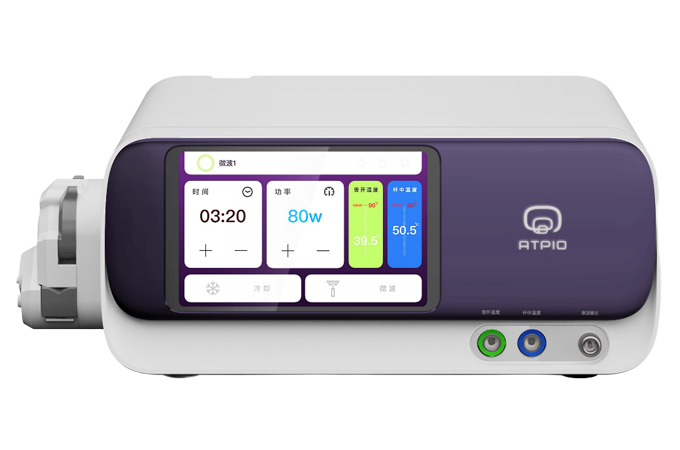

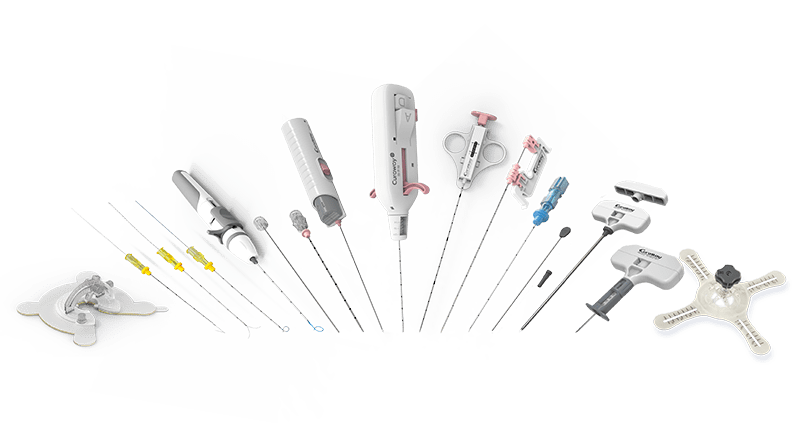

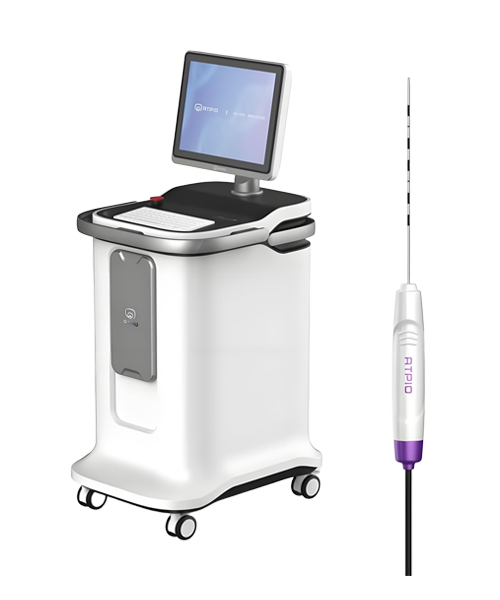


The latest statistics show that the estimated number of new cases of pancreatic cancer in Europe and the United States is the seventh among men and the seventh among women, accounting for the fourth in the mortality rate of malignant tumors. According to the 2019 China Cancer Registration Annual Report, pancreatic cancer ranks the sixth in the incidence rate of male malignant tumors in China, with a fast rising trend worldwide.
Indications: Nanoknife is suitable for other solid tumors such as prostate, breast, liver, lung, kidney, pancreas, etc., especially for tumors near the porta hepatis, gallbladder, bile duct, pancreas, and ureter, which have unique advantages. Compared to other methods of tumor ablation, the future market prospects of nanosecond knife are very broad.
1: Technical background
Tumors are a common and frequently occurring disease, among which malignant tumors are currently the most serious type of disease that endangers human health; Minimally invasive ablation therapy for tumors is currently a common treatment method. Minimally invasive ablation of tumors is usually guided by images, and energy such as radiofrequency, microwave, cryotherapy, laser, and electric field is precisely punctured into the tumor target area to perform precise minimally invasive ablation and in-situ tumor inactivation. It is a new type of precision minimally invasive surgery. Thermal ablation destroys tumor cells by heating or freezing tissues. Currently, widely used physical ablation techniques in clinical practice include argon helium knife cryoablation, radiofrequency, microwave, and laser thermal ablation. Although these ablation techniques have definite therapeutic effects, their main drawback is that the destruction of tissues is non selective, that is, in the ablation area, normal tissues and organs such as blood vessels, nerves, bile ducts, pancreatic ducts, etc. are completely destroyed except for tumor tissues. This disadvantage is the main cause of complications after ablation, such as common clinical complications such as massive bleeding after ablation, damage to the biliary system, intestinal perforation, and neurological dysfunction. In addition, due to the heat carried away by blood flow, the thermal ablation effect is severely affected by blood perfusion. Moreover, thermal ablation leads to tissue necrosis and is not easily excreted from the body.
In recent years, with the continuous development of pulse bioelectricity, electric field pulses have attracted the attention of researchers for their non thermal and minimally invasive biomedical effects. Among them, irreversible electroporation therapy for tumors has attracted widespread attention from researchers in the field of bioelectricity at home and abroad due to its advantages and characteristics of being fast, controllable, visible, selective, and non thermal. It has gradually been applied in the clinical treatment of tumors.
Irreversible electroporation, also known as nanosecond knife, is a novel tumor ablation technique that creates nanosecond level permanent perforations on tumor cells by releasing high-voltage pulses, disrupting cellular balance and causing rapid apoptosis. After tumor cell apoptosis, phagocytic cells in the body engulf the cell fragments, gradually replacing the treatment area with normal tissue. Therefore, nanosecond knife is also known as irreversible electroporation in medical practice.
The nanosecond knife developed by Xianou Medical Technology Co., Ltd. is suitable for liver, lung, kidney, pancreas, prostate, breast and other solid tumors, especially for tumors near the porta hepatis, gallbladder and bile duct, pancreas, and ureter, with unique advantages.
2: Advantages of nanosecond knife ablation compared to traditional ablation:
|
|
Nanosecond knife ablation |
Traditional ablation |
|
Selective ablation of tissues |
The nanosecond knife has advantages that other ablation techniques do not have, including selective tissue ablation, only destroying tumor "cells", and not damaging blood vessel walls, nerves, trachea and bronchi, bile ducts, intestinal tubes, and ureters. |
Traditional ablation results in tissue necrosis within the ablation area; And important tissues near the ablation area generally need to be isolated. |
|
The impact of large blood vessels in the ablation area |
The ablation of nanosecond knife mainly involves the penetration of cell membrane by electric pulse, during which no heat is generated. Even if there are large blood vessels in the ablation area, it is not affected and will not be affected by other external temperatures. |
Once there are large blood vessels in the ablation area during traditional ablation, their heat will be carried away by the blood flow, resulting in incomplete ablation of the surrounding area and easy recurrence. |
|
Clarity of ablation zone boundary |
The nanosecond knife treatment area and non treatment area are clearly distinguished, generally only at the thickness edge of a few cells, and the ablation is more thorough |
Traditional ablation will result in a "gray area" at the edge of the ablation zone, where there are still large areas of tumor cells that have not been completely inactivated in the outermost region of the ablation zone |
|
Recovery of normal function in the treatment area |
Nanosecond knife induces tumor cell perforation and apoptosis. One of the advantages of apoptosis is that it can use immunity to promote cell death. The human body recognizes cell apoptosis as a normal process of cell death, and then clears apoptotic tissue through cell phagocytosis, promoting the regeneration and repair of normal tissue. |
The traditional ablation mode causes protein denaturation of the tissue through temperature, leading to coagulation necrosis. After necrosis, the tissue structure in the entire ablation area no longer exists. Then the remaining necrotic tissue that is toxic to organs cannot restore normal function. |
|
Adaptability to complex medical conditions
|
In traditional thermal ablation therapy, once the tumor is close to high-risk areas such as large blood vessels, bile ducts, pancreatic ducts, and hepatic portal veins, it cannot be treated. In addition, for prostate tumors or tumors near the spine, ablation can easily lead to nerve damage, paralysis, sexual dysfunction, and other situations. Due to the fact that nanosecond knives do not damage pipelines and nerves, they can provide safe and effective treatment for the above situations, and have an irreplaceable role in this type of patient. |
Traditional ablation poses considerable risks for the ablation of hazardous areas |
|
Postoperative recovery |
Faster, tissue ablation usually takes about 2 weeks to show significant changes |
Slow, usually takes about 6 months for significant changes to occur |
3: Technical advantages of HGV-8300 nanosecond knife tumor treatment system:
The nanosecond knife tumor treatment system generally consists of three parts: the upper computer control system, the high-voltage pulse power supply system, and the electrode ablation needle. Compared with similar domestic and foreign nanosecond knife tumor treatment products, the HGV-8300 nanosecond knife tumor treatment system newly developed by Nanjing Xianou Medical Technology Co., Ltd. has made significant breakthroughs and improvements in the following convenience:
1: A temperature control system with unique algorithms
The fundamental advantage of nanosecond knife ablation is non thermal ablation, which does not damage bile duct tissue. However, currently, most nanosecond knife treatment systems do not have a temperature control system for ablated tissue, which can easily cause thermal damage to the ablated tissue and evolve into thermal ablation. Our company unique algorithm temperature control system for nanosecond knives can overcome this limitation of general nanosecond knife tumor systems.
2: Multi frequency collaborative control technology for more thorough ablation
The combination of high-frequency narrow pulse width and medium frequency medium pulse width ablation method: High frequency narrow pulse width is equivalent to opening a small hole in the cell membrane first, while medium frequency medium pulse width achieves rapid enlargement of the hole, thereby achieving irreversible perforation of the cell.
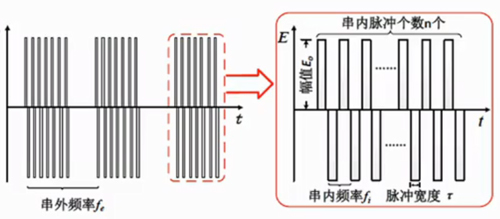
3: Bipolar single needle mobile ablation completely solves the problem of non parallel insertion of pins; Make surgery more options;
At present, when using nanosecond knife to ablate tumors, it is usually necessary to insert two or more ablation needles into the ablation site, and the parallelism between the two needles must be ensured; Our company has developed a method that simultaneously distributes two electrodes on a single needle, which can ablate tumors smaller than 1.5 centimeters at once. For tumors larger than 1.5 centimeters, mobile unit ablation can be used to achieve ablation of large tumors;
4: The composite steep pulse generator generates bipolar steep pulses, effectively suppressing and reducing muscle contraction, and preventing ablation needle displacement caused by muscle contraction.

5: Specialized transformer CF isolation technology can meet the technical requirements for cardiac electrical use, thereby achieving a higher level of safety.
4: Animal study of HGV-8300 nanosecond knife tumor treatment system:
1: Animal Experiment of pancreatic cancer
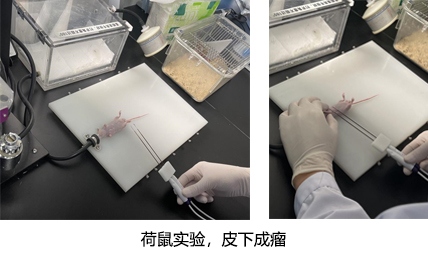
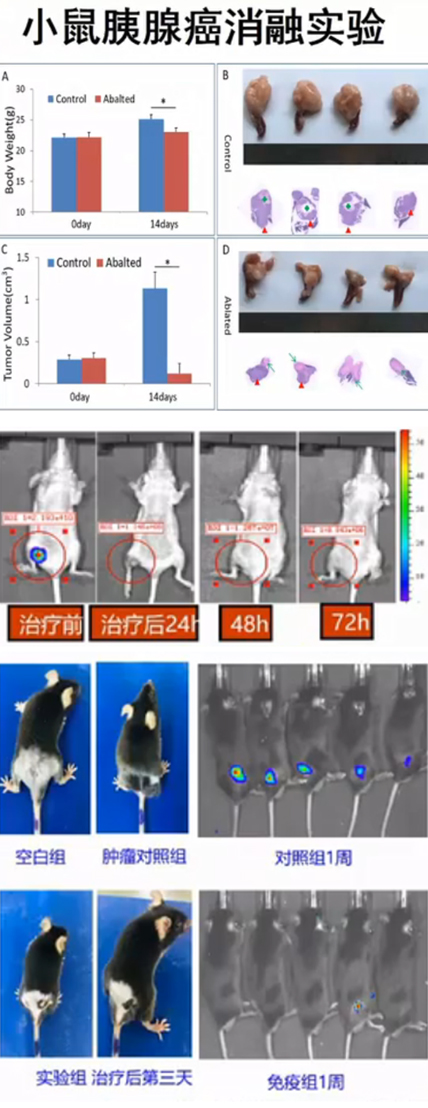
2: Liver ablation experiment
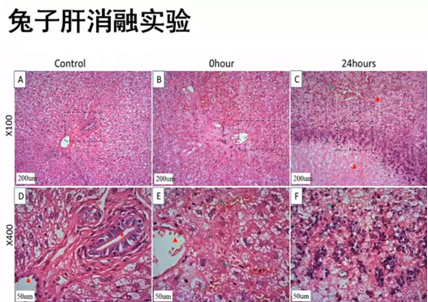
The ablation boundary is clear, and the blood vessels remain normal.
3: Ablation of large animal surface glandular tumors
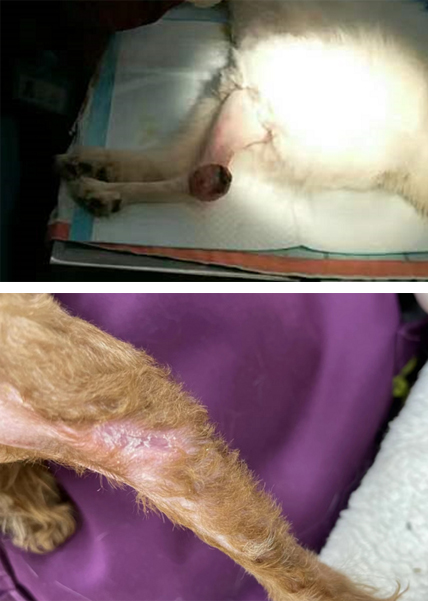
After three months, the surface glandular tumor completely melted and returned to normal.
Address: Building 8, No. 339, Road 25, Baiyang Street, Qiantang District, Hangzhou, Zhejiang Province

Scan WeChat